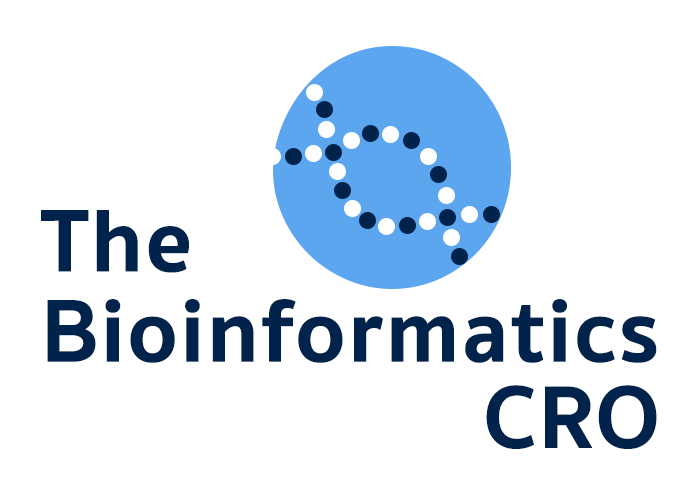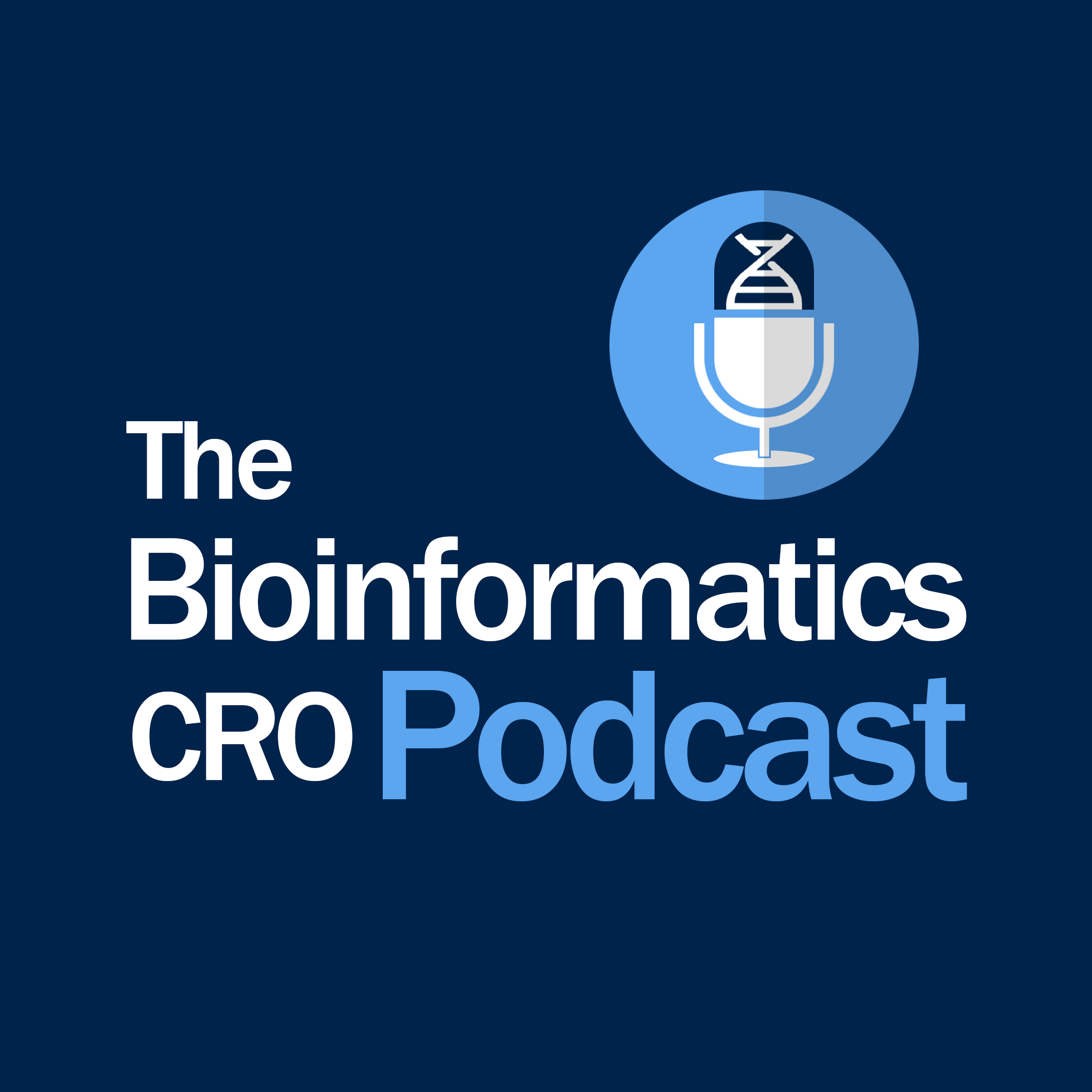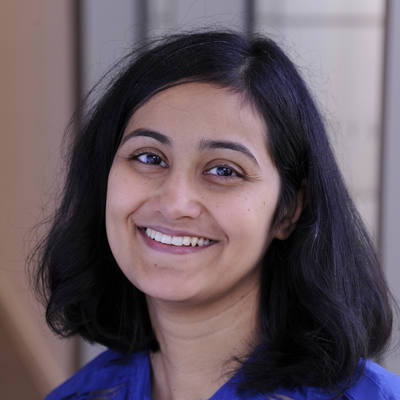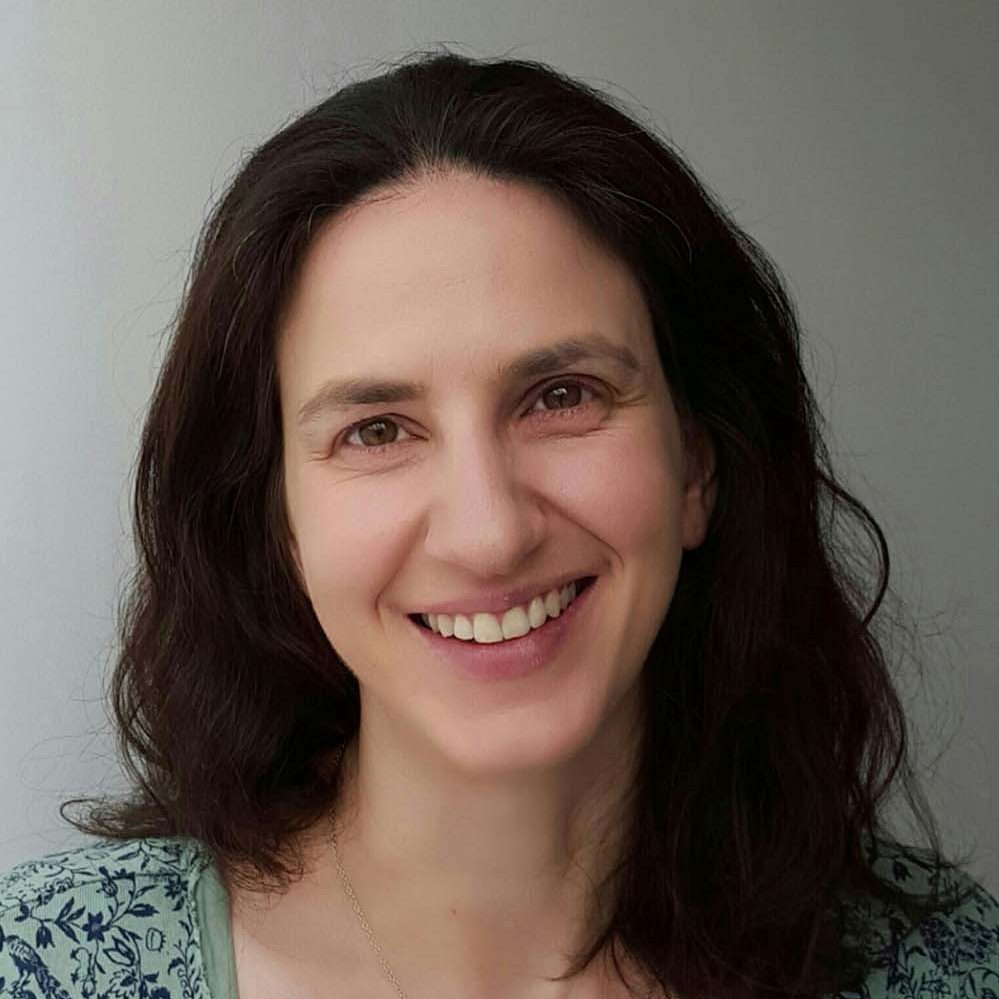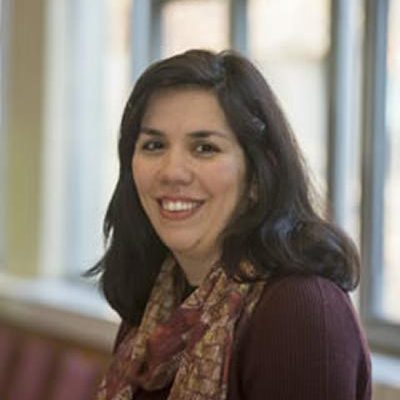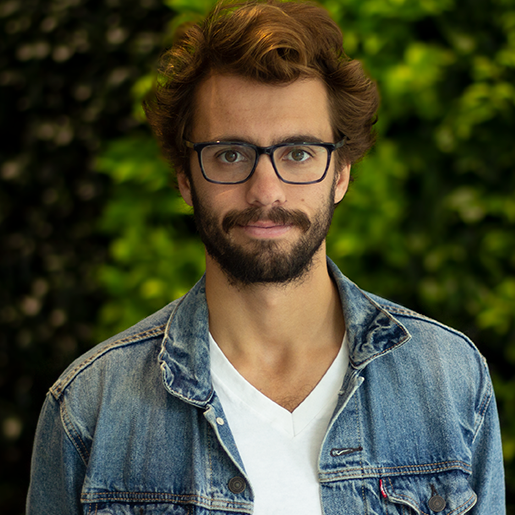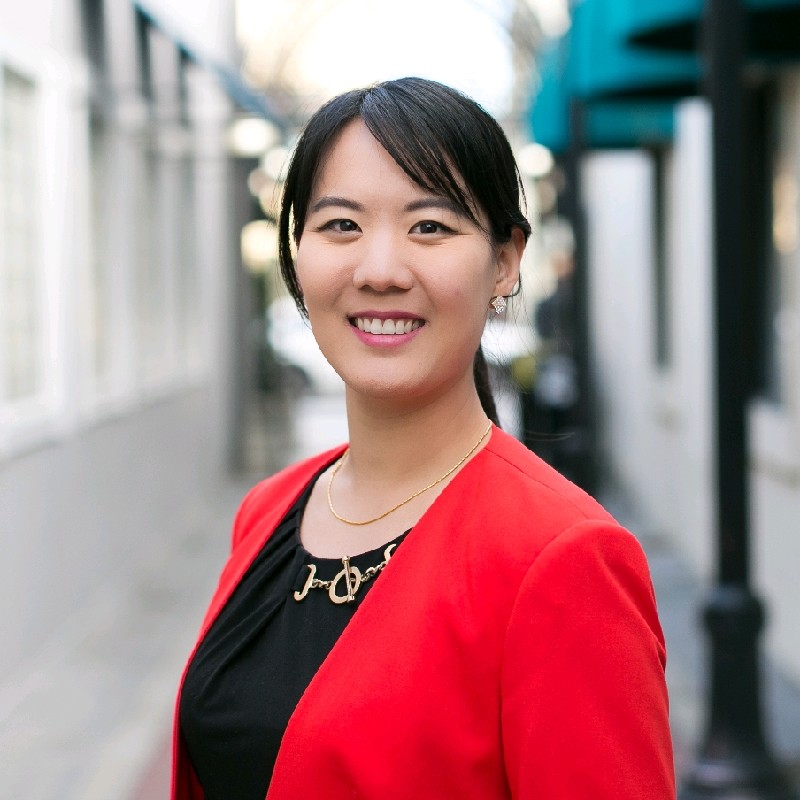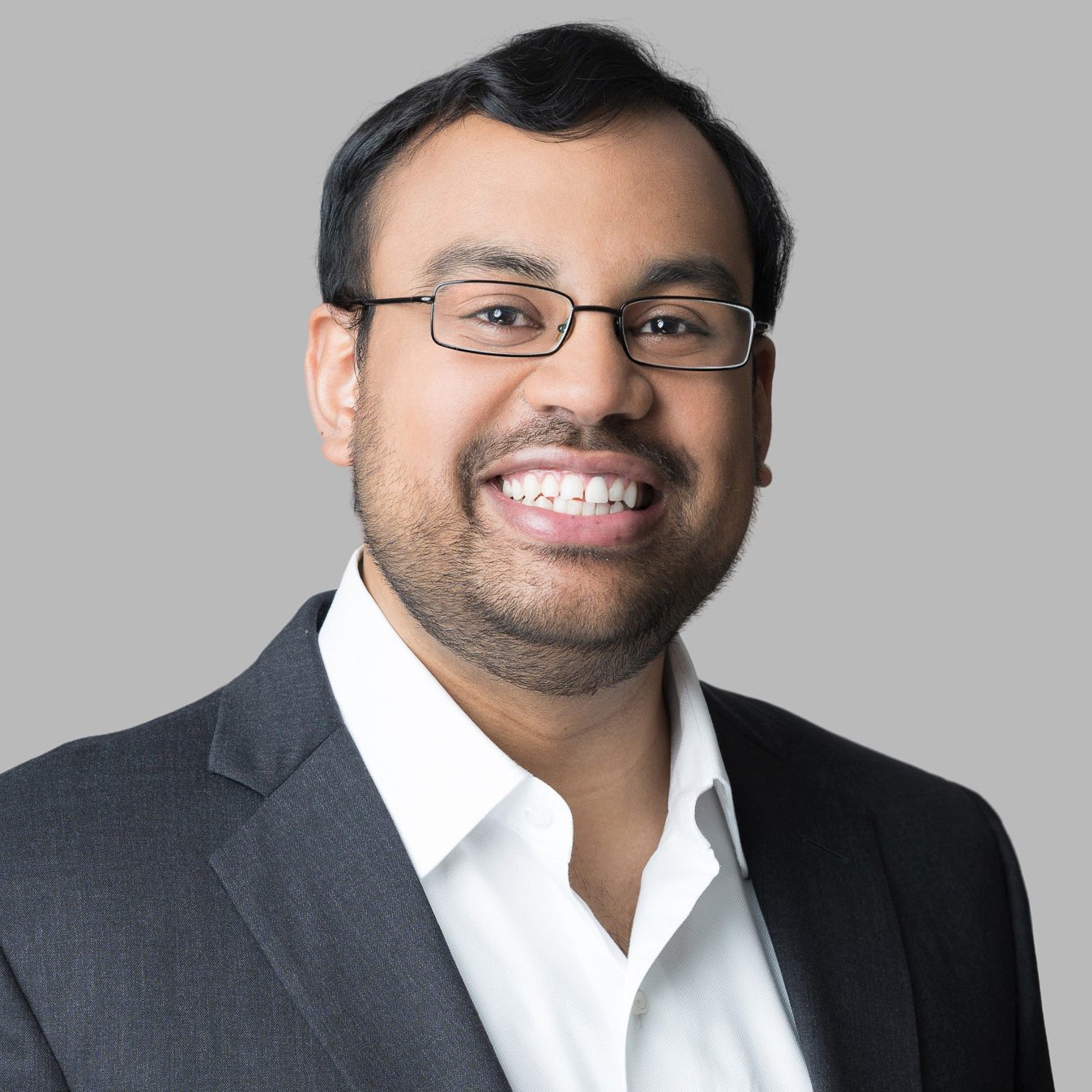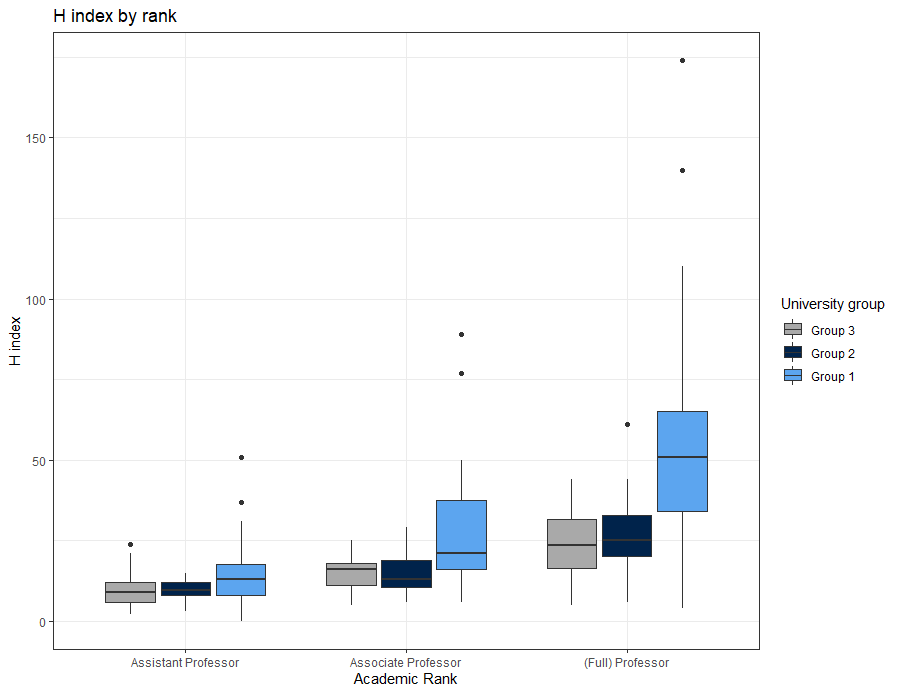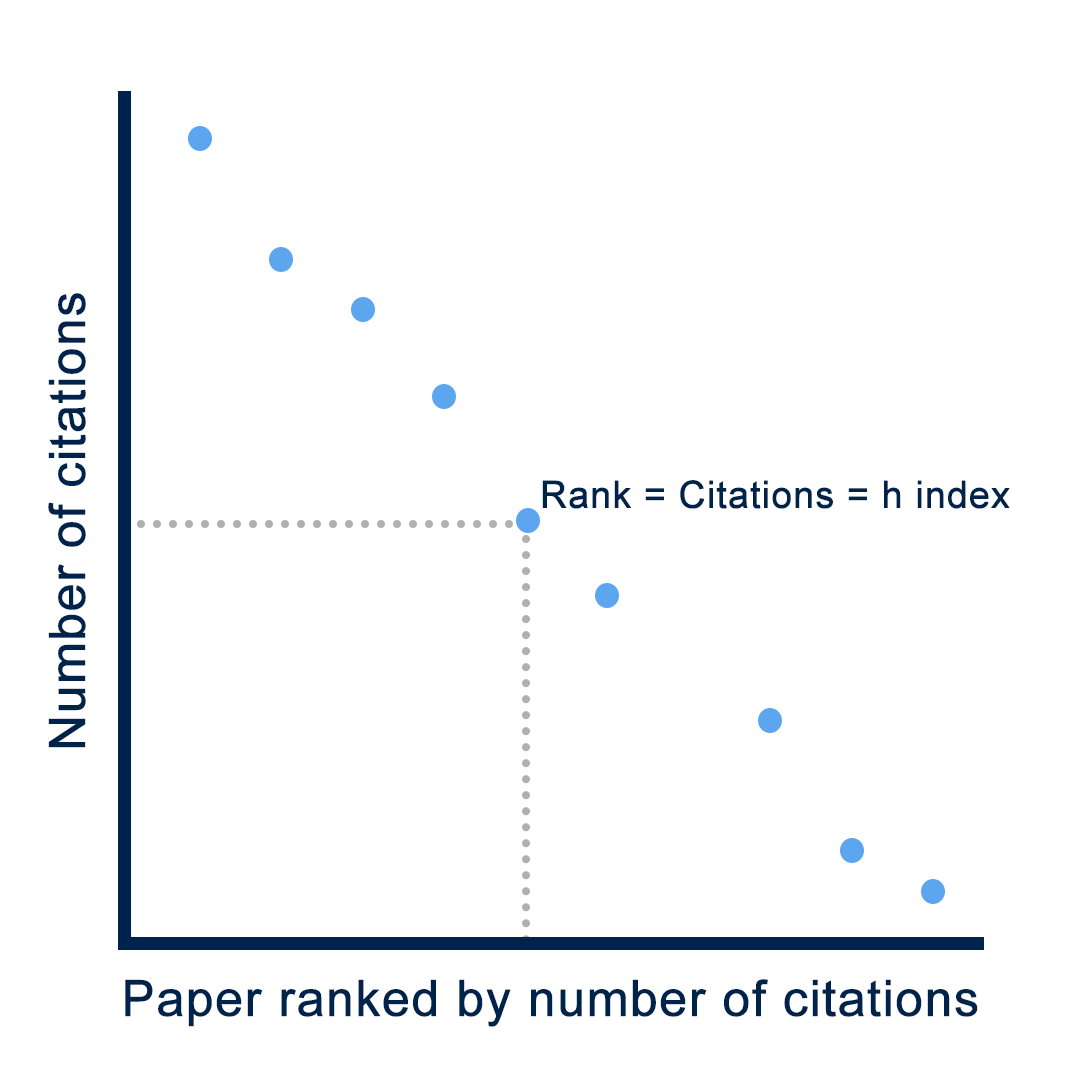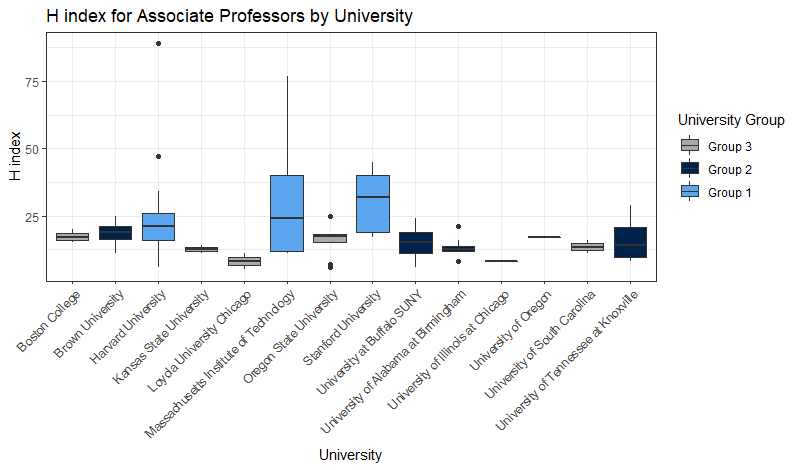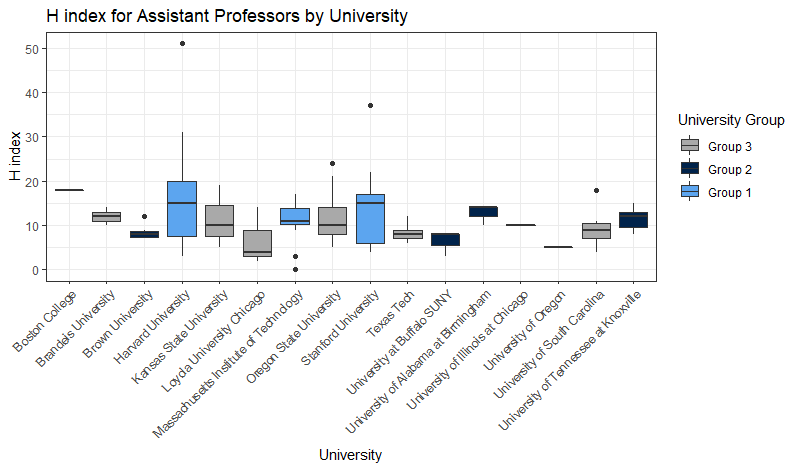The Bioinformatics CRO Podcast
Episode 13 with Deepti Gurdasani, Christina Pagel & Nisreen Alwan
In our first panel discussion, three COVID experts share their thoughts on emerging variants of SARS-CoV-2 and the growing selective pressures for immune escape.
On The Bioinformatics CRO Podcast, we sit down with scientists to discuss interesting topics across biomedical research and to explore what made them who they are today.
You can listen onSpotify, Apple Podcasts, Google Podcasts, Amazon, and Pandora.
Deepti Gurdasani
Deepti is a clinical epidemiologist and senior lecturer in machine learning at Queen Mary University of London. During the COVID-19 pandemic, she uses machine learning to understand prominent clusters of patients’ symptoms and how people are likely to progress over time.
Christina Pagel
Christina is director of the Clinical Operational Research Unit and a Professor of Operational Research at University College London. During the COVID-19 pandemic, she works closely with clinicians and public health professionals to communicate research to the public.
Nisreen Alwan
Nisreen is an Associate Professor of Public Health at the University of Southampton, researching maternal and child health. During the COVID-19 pandemic, Alwan uses social media to communicate public health messages and to call for long COVID to be counted and measured.
Transcript of Episode 13: Deepti Gurdasani, Christina Pagel & Nisreen Alwan
Grant: Welcome to The Bioinformatics CRO Podcast. I’m Grant Belgard and joining me today are three heroes of COVID from the UK. Nisreen, can you please introduce yourself?
Nisreen: Yeah, sure. Thanks, Grant. So I’m Nisreen Alwan. I’m an associate professor in public health at the University of Southampton and an honorary consultant of public health at University Hospital, South Hampton.
So my research area, before the pandemic, was maternal and child health. So for a few years now, I’ve researched particularly around pregnancy, before pregnancy, between two pregnancies what modifiable factors mothers have or are exposed to, including environmental factors. And how they influence their health and the health of their children, both in the short and the long run.
Now in terms of COVID. So obviously I’m in public health and when the pandemic started in the UK back in February and March, I got very much involved with a group of public health academics and epidemiologists to try and provide some independent public health input to what was going on. So we produced a few outputs and letters looking at the government response and putting some expert input into what was going on in the spring. While I was doing that, I also got symptoms of COVID-19 in March, which didn’t completely go away. I kept getting relapsing symptoms, so basically what we now know as long COVID.
So I got involved in the advocacy around long COVID because people weren’t really talking about illness from COVID-19 at all. It was very much black and white, death or nothing happens to you. So I started talking about how we need to measure illness and what long COVID looks like. That’s been my heaviest involvement I would say in the COVID-19 pandemic so far, but I also continue to input on things which are very much relevant to public health, particularly in my area of interest, which is around children and families.
Grant: Thank you so much and Deepti?
Deepti: Hi, I’m Deepti Gurdasani. I’m a clinical epidemiologist and senior lecturer in machine learning at Queen Mary University of London. A lot of my work over the last decade has focused on studying the genetic and clinical determinants of disease in a global context. So particularly in more ethnically diverse populations, more recently my work has focused on trying to understand the impact of different interventions on COVID pandemic trajectories in a global context using machine learning methods. As well as studying long COVID alongside Nisreen to understand what the prominent clusters of patients’ symptoms are and how people are likely to progress over time.
And a lot of my work is essentially in developing new methods to help us understand what puts people more at risk and what influences how a pandemic starts and continues in different parts of the world.
Grant: Thank you so much. And last but not least, Christina.
Christina: Hi, I’m Christina Pagel. I’m a professor of operational research at University College, London. And operational research is like a branch of very applied mathematics. I think in the States it’s called operations research or management science, or systems engineering. It has all these different terms, depending on which department you’re in.
But it’s basically motivated by using whatever kind of quantitative methods you can to help solve real problems. And that’s kind of what I do. And part of that has been national policy, so we have worked quite closely with the department of health around pandemic planning, but back around swine flu time, say 2009/2010.
And since then, a lot of my work has been working with clinicians and people living with congenital heart disease and kind of trying to use national data sets to understand outcomes, communicate outcomes, make sure we’re researching what matters to patients, what matters to doctors and how do you explain that really complex interaction with the health system over time?
So that’s kind of what I’ve been doing. And then when the pandemic hit. My projects came to a big hole because we work so closely with doctors and they obviously all pulled off in that effort. And then we worked quite closely with local hospitals, just trying to help them understand what was happening. Helped them think about how to organize their care and what made a difference just because no one really knew what was happening in the first few months. And then in May, I was asked to join Independent Sage, which is like a group of 12-13 scientists from different backgrounds.
And that kind of was meant to be just one, two hour meeting in May. And it’s ended up taking over my life eight months later. And we’ve kind of ended up serving in both a policy advocacy and public communications role. And that’s what I’ve been doing. Just trying to take all the amazing science that’s happening from people like Nisreen and Deepti and just trying to explain to the public what it means, what’s happening, are things bad, are they good, what do we have to watch out for, where is it going. And just trying to do that in a way that is accessible and not sensationalist, I suppose, is what I’m trying to do.
Grant: Thank you so much. That is a great segue to our first topic: where things are going. I would love to hear all of your thoughts on the new variants. And maybe for the sake of our listeners: there’s a lot of noise out there. If you can kind of distill down what we know and what remains unresolved.
Christina: Well I can start on that. I’m just a mathematician by background and I work mostly in the more operational side of healthcare. And I don’t have a background in viral and infectious diseases, so I hadn’t really been thinking about variants to be honest.
So I knew that obviously there’s potential for mutation and people talked about it, but over the summer I was hearing, “Oh, don’t worry. It’s mutating slowly.” So I just hadn’t really been thinking about it. And then in November or very early in December, when they first mentioned that there might be a new more transmissible variant in the UK, I was just like, “Oh”, and then I remember very vividly watching the press conference where Matt Hancock said it might be up to 50%, 70% more infectious.
And I thought, “this is really, really bad, really bad.” Just from the basic maths of it. Once you have something that’s that much more infectious, then everything we’re trying to do to keep things down is that much harder. I also, to be honest, felt not relief, but at least it suddenly made sense why things were going wrong in the Southeast of England. Because I just could not understand why cases were going up with the kind of restrictions that we had.
And so that made sense. I was like, “Oh, okay, well that kind of explains it.” But then I just thought, “then we’re in trouble. We’re in real trouble. Unless we do something straight away.” And that’s kind of proven to be the case. We had a terrible, terrible January in the UK and other countries that have had the UK variant had real problems: that’s Ireland, Israel, Portugal.
And then of course there’s the South African variant and then the Brazilian Variant. And you realize now that we have so many millions of people who’ve had COVID. And it has had so many opportunities to mutate. And if it comes to a situation where it can infect people more easily or it can infect people who’ve already had it or who’ve had the vaccine, that gives it a big advantage.
And I think that is the biggest danger now because we’ve got millions of people who’ve been vaccinated and millions of people with COVID and you’re really giving it a lot of incentive to evolve in a way that’s quite bad for us. And so we’ve ended up in a bit of an arms race, and I’m not particularly happy about it.
Deepti: So while there’s a lot of talk about new variants now with the media, the truth is that the virus has been evolving over a long period of time. So in February itself, we know that there was a variant called D614G that was identified and was circulating. This is a variant that was subsequently found to be about 20 to 30% more transmissible than the previous variant and became dominant globally by June. And since then, there’s several variants that have risen on the spike protein, which is the part of the virus that we know binds to human cells and is necessary for infection that have potentially allowed the virus to escape immune responses directed at previous variants, at least in the laboratory.
And subsequently in September, we heard about many new variants arising from infection to and back from mink farms. So mink were a reservoir for infection. And a large number of mutations were accumulating that were being transferred back to humans. And once again, there were concerns about how these mutations could potentially escape immune responses, directives as previous variants.
So in many ways, this was expected, I guess, given the high levels of transmission that we’re continuing in many countries, but I guess the degree of increase in transmission was quite a shock when that happened. So we heard about the UK variant very close to when we heard about the so-called South Africa variant with both of those potentially increasing transmission by about 50%. And subsequently it also became clear that there were other variants in Manaus as well.
And there were many shared mutations between these variants. So they were particular mutations such as the 501Y mutation, which was potentially associated with increased transmissibility, increased affinity to the ACE2 receptor, which is a receptor required for binding and infecting human cells. And there were also variants such as the mutation such as the E484K, which has been associated with escape against immune responses, directed at previous variants.
Now we have become aware that unfortunately, these laboratory findings are translating into reduced vaccine effectiveness. We know from the Novavax and Johnson & Johnson trials, and more recently a report from preliminary data from the AstraZeneca-Oxford vaccine, that effectiveness to prevent symptomatic disease at least is likely to be lower against this particular variant for vaccines that were manufactured against previous variants, and this is something that’s really concerning at the moment.
But what’s really interesting is the way these variants have emerged in different parts of the world, again and again, independently, but converged onto the same mutations, which suggest that these are actual virus adaptations that are favorable to the virus in certain environments.
And there’s no reason to think that adaptation will stop here and not continue given that we’ve seen the virus evolving pretty much since February 2020. So we really need to tackle this in a different way than we have so far. We’re also hearing about new adaptations on top of variants.
So for example, the UK variant now seems to be evolving in the direction of the South African-Manaus variant, developing the same mutations that have been associated with escape and reduced vaccine effectiveness. So unless we really do something to stop this, this is likely to continue.
Grant: Nisreen, would you like to give input on that? Or should we move on?
Nisreen: There’s not much more. I can add really to that explanation. I suppose the main, simple truth around the variants to me from a public health point of view, is that it’s obvious that if you give the virus a lot of room to spread you will get these mutations and variants. You could get more of them.
And so I think it’s about how much room we’re giving the virus to spread. And the other thing from a public health point of view is even though there is a difference in the transmissibility of these variants, actually the public health measures that we use are the same and they would work on all the variants.
So that’s good news in a way, in that we don’t have to learn this all over again in terms of what we can do to suppress the virus other than the vaccination, obviously, which will have to adapt to the variants. But in terms of the non-pharmacological interventions, they’re the same.
Christina: And we’re seeing that in the UK now, like the quite strict lockdown is working to reduce cases, even though the English Variant is now dominant across the country, but we are still having reduction in cases and reduction in hospital admissions.
Grant: And so following on from that, what do you think is a reasonable spectrum of possibilities for where this might go in the future. Do you think it’s in the realm of possibility that we’ll be back to normal life in the foreseeable future or that we’ll have some kind of a COVID-22 that has 30% fatality or something? Is it just a complete unknown?
Christina: Define foreseeable. What’s the foreseeable future? Is it a year, five years, 10 years?
Grant: Can you give us some hope? Like what, what would be a time range?
Christina: I don’t think we’ll be back to normal this year. That’s why I think, I don’t think we will this year. If we can get as many people vaccinated everywhere, not just in rich countries, it has to be everywhere. Keep some measure of quarantine at borders. Keep really good surveillance in place. Keep cases down until you get kind of local elimination and you’re looking at sporadic outbreaks. Then I can see a return to normal, but doing that is going to take well over a year.
And if we don’t, if we just say we’ll vaccinate our own country, then you will get new variants rising and you will get variants that evade the vaccines. Not in the least because if they can evade antibodies from people, who’ve had it before, that same evolution might help them if they get the vaccine. So we just can’t risk it and we’ll just end up doing it again. So that is my fear. That we will end up in some kind of COVID Groundhog day, which would be just really, really miserable. But we know there’s a way out. It’s just, will we do it?
Nisreen: I think one of the things, if I may say, which might have hindered the pandemic response is this desperate urge to go back to normal. I think if we had adapted a bit and said, this might be with us for a while, so we have to change our behaviors. We have to change how we do things in a certain way, which is tolerable to us as a society, to our mental health which doesn’t result in severe social isolation.
For example, if we had adapted a bit from the start and looked at it as a bit of a more of a long-term adaptation, then maybe we would be in a better place now. And also this is not too late to think about. So I think this pandemic has been played and I just see it and it pains me. Everything is black and white. Everything is really bad or we want to go back to completely normal and the same with the mortality. “This virus doesn’t touch you at all, so go and get it.” And every single aspect of the pandemic has been plagued by this black and white picture. And we need a bit of gray in here. It’s a difficult time for us, but it doesn’t have to be black and white. It could be gray if we get the balance right.
Christina: Yeah. I think that’s a really good point about this desire to get back to normal, almost making things worse as people kind of keep trying to push it. And it just slaps you back in the face.
Deepti: To me, the question about when we can get back to normal is completely dependent on government strategy and political wealth. So there are two end points to this. One end point is complete elimination so we don’t have cases anymore, and life can return to a new normal. And the other end point is achieving herd immunity so that we don’t see at least large outbreaks of infections anymore.
The former probably is faster to achieve because many countries have done this within a period of about six months or so, but requires very strong political will, fixing a lot of systems within the UK that are broken and actually persevering with lockdown, supporting the public through the spirit until the cases reach near zero before lifting restrictions and then having good surveillance systems in place to actually pick up cases and support people, and isolating where needed.
The second strategy, which is pursuing herd immunity primarily through vaccination. It is much harder to predict what the end point of that will be. And the reason for that is that it’s really unclear whether herd immunity can even be reached through vaccination. We’re dealing with a variant that’s more transmissible, which means the herd immediate threshold is likely to be higher.
The vaccine is still not going to be available in many groups, particularly children who do transmit the virus. And we don’t know what the vaccine uptake is going to be across the population. And of course, we don’t know what the vaccine effectiveness is in preventing infection. All of those unknowns make it very hard to understand whether herd immunity can be reached at all. And if it can, when it will be reached.
If we add new variants into the mix, it’s even more complicated because as new variants emerge, they may be able to escape vaccine acquired immunity, to the previous variants, which would make trying to achieve a herd immunity threshold almost impossible and outbreaks could potentially continue for many, many years.
So I definitely favor the former strategy because I think it’s more clear cut. There’s less uncertainty around it, and it can be achieved in a shorter period of time, but it’s all down to political will and strategy. And it’s very clear that many countries are still pursuing the latter, even though that’s a lot less certain and the potential public health costs and the economic cost is much higher.
Grant: Anything else to add on that before we go on to long COVID.
Christina: I would just add that to me, like the arguments for an elimination strategy, like Deepti was saying, have just got stronger and stronger over the last six or seven months. And I think, especially with the new variants and the new transmissibility. I actually think we probably won’t ever be able to reach the herd immunity threshold.
And if we did, we still don’t know how long immunity lasts, so that’s the other issue. So an elimination strategy just seems like the one thing that we know we can do because lots of countries have done it. The problem is that if only some countries did it and some countries never do it, then you’re looking at having quite strict border controls for years and years and years. And that has consequences. So I kind of felt like we have to work together as a whole globe. And I’m not sure we have a great track record of doing it.
Deepti: Thanks for pointing that out, Christine. Those are very, very important points.
Nisreen: I agree with both Christina and Deepti, so there’s no sensational disagreement on this one. I think an elimination strategy is the way forward.
Christine: It just seems like a no-brainer. And I have to be honest, like whenever I see pictures of people going to concerts and New Zealand or just going out, I’m just so jealous. I’m like, I want that. Or people in a busy market in Thailand or Taiwan and going out to restaurants: why can’t I have that in my life?
Nisreen: And people over there have accepted certain sacrifices to do that in terms of lots of things, but including border control. It’s tough not being able to leave, and they’ve accepted that. And I think what was key to that is a very clear public communication right from the very start.
Basically the policymakers saying, this is the goal. It’s clear. You know what we’re aiming for. These are the sacrifices that need to be made, but this is what we’ll get if we make these sacrifices and that’s what happened. And we didn’t have that clear strategy and I’m afraid we still don’t have it yet, a year in.
Christine: It’s definitely happened in the UK, that we try to “tech” our way out of it. It was kind of like: we’ve got this great tech technological solution, whatever it happens to be. And it’s kind of been a series of them, none of which have worked. Instead of actually just saying we’re in a global pandemic and there’s nothing about that that’s going to be very fun.
I mean, sometimes people are like, I don’t want to do this. And I’m like, well, it sucks. Right. It sucks to be in this situation. And we’re kind of the first, really bad pandemic in the modern era when you have a globally connected civilization. So it is really, really difficult, but that honesty of messaging and of saying, if we do these things, we’ll get these payoffs. We just didn’t really get it here.
Deepti: And yeah, I completely agree with that. And also the fact that we’ve learned a lot about SARS-CoV-2 over the past year, but the fact is we didn’t need any of that information to know how to manage it because the countries who managed it successfully right at the beginning, treated it as it was: a highly infectious respiratory virus.
And it was just public health 101 that they followed and that worked. And we know that’s what works even now. But as Christina said, we tried to find these new technologies, which we’ve not even added to our response, but rather use them to replace basic public health responses. And it’s no surprise that it’s completely failed.
Grant: Speaking of those technologies, where are we on vaccines? And do you think with all the new variants going around that the mRNA-based vaccines will be able to be updated quickly enough? Do you think there is a technological path out of this?
Christina: Well, I can’t really talk about vaccines without sounding like a complete and utter idiot. Like I barely know what mRNA is. Seriously, go for it.
Deepti: Okay. I mean, I’m happy to talk about that. So vaccines can be updated. And while technically it might be an easy thing to do, they still will require a huge amount of testing and the laboratory in people and validation, which will take several months.
And I think the big question is: what are going to be the variants in place by the time that vaccine comes out. So we need to actually take preemptive action to prevent variants from emerging right now. By really curbing transmission and pushing towards elimination. Because unless we do that, we’re constantly going to be behind vaccine manufacturing.
The point is that we can’t wait three to four months to actually vaccinate people because our emergency services were overwhelmed until a few weeks ago. And even now many places are very close to capacity. So the idea that we can maintain huge amounts of transmission alongside vaccination and have a good vaccine response isn’t really grounded in reality.
We need to remember that we have these variants emerging right now, even without huge amounts of immune selection pressure within the population. As we start vaccinating more and more people, there’s going to be much more immune related selection pressure. Potentially speeding up the sort of adaptation we’ve been seeing, and we may see even more escape mutations. So we need to actually keep ahead of this by following elimination and preventing emergence of new variants, rather than constantly having to adapt our vaccines too late to these variants.
Nisreen: Yeah. I mean, again, I agree. I think it’s that we can see now and everybody, the public is probably seeing there’s a race between the vaccine and the virus adapting and changing.
And I think all the technology in the world will not win the race if the virus has a lot of room to spread and infect more and more people and change. So it’s very clear now that the vaccine can not be our only strategy out of this. Although I am increasingly surprised by the many people who are still reinforcing this method.
Christina: So the fact that we have so many good vaccines within a year, I still think is pretty miraculous. And it does put us in a much better position than we would otherwise have been. Even with all of the caveats and the concerns that Deepti and Nisreen have spoken about. That is pretty amazing to me.
Nisreen: And I agree.
Deepti: I agree completely with what Christina said. We have a large number of vaccines that are effective against not just the previous variants of the virus, but still highly effective, at least in preventing severe disease for most vaccines, even against current variants of the virus. And if people are offered the vaccine, they should absolutely take them. But I’m more talking about adapting policy to kind of ensure that these resources are protected for our future.
Grant: Great. Thank you so much for that. And in our last 10 minutes, I think it’d be great to talk about long COVID given that obviously a very large number of people have been infected and realistically it sounds like a very large number will continue to be infected in the foreseeable future. So can you talk about long COVID and what we do know, what we don’t know, what maybe your biggest concerns are long-term for people’s health?
Nisreen: So surprisingly, we still really don’t know a lot about long COVID. What we do know is it is to have long-term illness. Obviously, when I say long-term, that is the age of the pandemic, which is not very long now. And we know that some people who get the infection do not recover quickly.
And that includes two things. People who are severely ill and hospitalized because of the infection. They might get discharged from hospital and still feel unwell for a while. They might suffer complications like heart or lung clotting complications, neurological complications. But also people who were not hospitalized at the start and had a so-called mild illness, might not recover.
So the estimate at the moment is about one in 10 people have not recovered even from a mild illness at about three months from onset. So that’s quite a sizable proportion depending on how many of the population are getting infected. So it’s basically a collection of symptoms that people experience and it’s multi-system, so it could be heart, lung, neurological, skin, general symptoms.
It’s rare that people will have just one system affected. And the severity of it is really variable. We still don’t know the mechanism, and if there’s more than one underlying mechanism of long COVID. Because of the variable clinical picture as well. And the proposed mechanisms include overdrive of the immune system that happens after getting COVID-19 that causes an autoimmune process, or it could also be a persistent virus that flares up from time to time. Or a general inflammatory process. So there are multiple mechanisms proposed.
My main concern about long COVID is relevant to what we’ve been talking about, which is basically the strategy. The strategy is focused mainly on vaccinations. So if you say that that is the most important thing and our target is to prevent severe disease, which basically means hospitalization and death. If that’s achieved, that’s fine. We’re out of the pandemic. We don’t need to do much about it.
Then that could actually allow for a lot of long COVID where people don’t get to that threshold of needing to go to the hospital in their initial illness, but then they don’t really recover. And that means huge implications for society in terms of people not being able to work and the sick pay not being able to care for people.
So. I don’t really see this factored in. I don’t see long COVID factored in in all of these pandemic policy decisions that are being taken at the moment. And that’s a big concern.
Grant: Is there data on the effect of vaccines on the incidence of long COVID?
Christina: No, we just don’t know if it’s effective.
Nisreen: There is no data. There are anecdotal stories of some people improving after getting the vaccine, some people getting worse symptoms. So really there’s no systematic data on it. And that is probably also because we don’t have a lot of long COVID patients who are already vaccinated or given the priorities for vaccination. Because lots of people with long COVID are in younger age groups and healthcare people who don’t have any underlying medical conditions before getting it.
Deepti: I think that’s a very important point that when we look at severe disease, which is defined as hospitalizations and deaths, the sort of demographics of the age groups we look at are quite different from the ones that are affected by long COVID. And targeting just one group is not going to necessarily impact the other. For example, in the UK, easing of lockdown has been tied in right from the beginning from vaccine targets.
And that doesn’t really account for any of this at all because the vaccine essentially will prevent severe disease in those who are being vaccinated, but we want to vaccinate enough people to come close to reaching herd immunity. So transmission will very likely continue amongst the younger population who are the majority of cases anyway, if we start easing lock down.
And that will mean many, many more cases of long COVID. So we will probably end up with a pandemic of chronic disease in a few months time or even a few years time. It’s something that we don’t fully understand, but will not take seriously, unfortunately until it’s too late.
Christina: I mean, it has just been so irresponsible. So at the moment in the UK, we’re trying to vaccinate everybody over the age of 70 plus health care workers by the middle of February, and we’re on track to do that. And that’s amazing. And that will have a massive impact on deaths and the reasonable impacts on hospitalizations. But 90% of cases are under 70 year olds.
They’re not the drivers of transmission and just the idea that somehow that these schools open up and it’s fine for younger people to get it.. It’s just crazy because it’s not fine. Even something like one in seven kids have symptoms after seven weeks from the Office of National Statistics.
It’s just the idea that we would just expose people to potentially long-term problems. Well, we know there are long-term problems, but also we don’t know what could happen in five years time. We don’t know what the long-term impact is at all. How can we, it’s only a year old, right? I mean, after the Spanish Flu in 1918, there was a kind of mini epidemic of Parkinson’s 15 years later.
Because it ended up damaging the brain. We don’t know any of that. So the idea that you would just encourage people to get infected because you can’t be bothered to have an effective public health strategy just drives me crazy as you might be able to tell.
Nisreen: I think that’s exactly what it is. The uncertainty of it all. And right from the start we saw that. I certainly did. It’s a new virus. You don’t know what it’s going to do. And there was this certainty around saying, No, it’s going to go away and it won’t touch you. And when people were talking about herd immunity and getting young people infected, it was really a horror movie happening in front of my eyes. Because I was thinking Do they know something that I don’t know? Because how do they know this virus won’t give you long-term effects?
And even now you say long COVID, it’s just post viral syndrome. So the two things. First of all, first of all, post-viral syndrome is not “just”. It disables people severely, potentially for a very long time. So if you have loads of people with it, that’s a major problem. But also you don’t know if it’s post-viral so you don’t know if it’s going to go away and you don’t know who’s likely to get worse.
There’s so much we don’t know. And the way we’ve abandoned the precautionary principle and embraced that uncertainty, I find it very astonishing. And we continue to do so. We really need to revisit that in terms of how we communicate that uncertainty and act on it.
Grant: Great Deepti, Christina, thank you so much for joining us.
Christina: Thank you.
Deepti: Thanks for having us.
Nisreen: Thank you so much.
